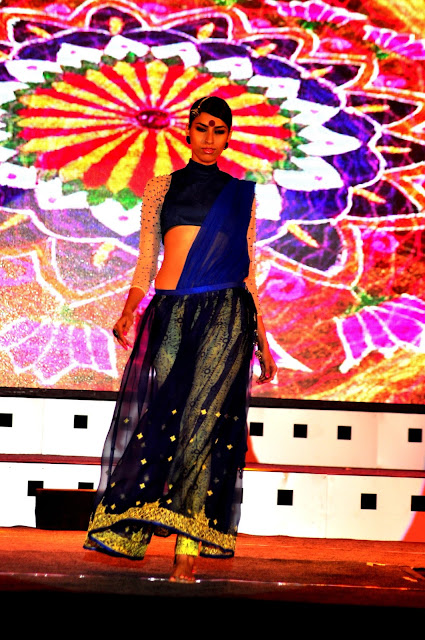This Collection is for confident and ambitious woman, who wish to carry their traditions along with their success. They are proud to showcase their culture on the western platform. The history of Indian sari is a saga of amazing creative skills that evolved from the pre-historic era into glorious traditions, each tradition with its unique flavor. It is a testimony of their innate strength that many sari traditions have remained intact till this day, in spite of the social, cultural and economic upheavals. The title ‘TATTAVA’ means the Element,
essence, principle, essential nature, truth, substance, soul which when combines completes a substance. So does the five elements Earth, Water, Fire, Air and Space completes the universe. Collection is inspired from each element and made with modern silhouettes.
Earth – Traditional motifsThe traditional Indian motifs from different regions. Combination of floral and geometric motifs.
Water- Drapes of Indian Region
The Indian saree drapes. The selected drapes below are the inspiration.
Fire- The warm welcoming colors
The warm welcoming Indian colors picked from the images.
Air- The intricate work
The intricate work- using thread embroidery, color on color and beads adding the highlight on sheer fabric.
Space- The modernization
Using modern cuts and silhouettes for blouse and digital printed pants (no petticoat).
Down the ages, the sari has survived sociocultural and economic changes in this part of the world. In fact, numerous cross cultural influences and interactions across communities have only enriched the
sari. The richness of colors, the exquisite weaving skills of diverse communities and the truly amazing diversity in styles of draping has made this nine-yard piece of cloth the epitome of womanhood in India.
The fate of sari, in the present times, is however, somewhat disconcerting. Current trends reveal that sari is being worn less and less by the younger generation of women. This trend could have serious implications for the sociocultural identity of the Indian women. If this trend persisted, forthcoming generations will be oblivious to the sari and the sophisticated skills required in its designning, weaving and draping. It is in fact difficult to imagine the survival of some of the sari traditions present today without encouraging the accumulation of and specialization in hereditary skills. Sari and design are inseperable in many ways. It is only now that we have begun torecognize this mutual interdependence. In an arduous journey which spans over
a long period of time, Indian design, as a discipline, has gained rich experience and insight. Through collaborative interaction for new design development and diversification, the discipline has devised successful methodologies to leverage a hopeful future for saris. We are just trying to be a part of intiative to
help the survival of traditional sari culture.
‘TATTAVA -revival of sari’ is about redefining the voyage of Indian Traditional Sari. The essence which is still there but a little lost in
the present time.
Email for further questions or orders to place.






































